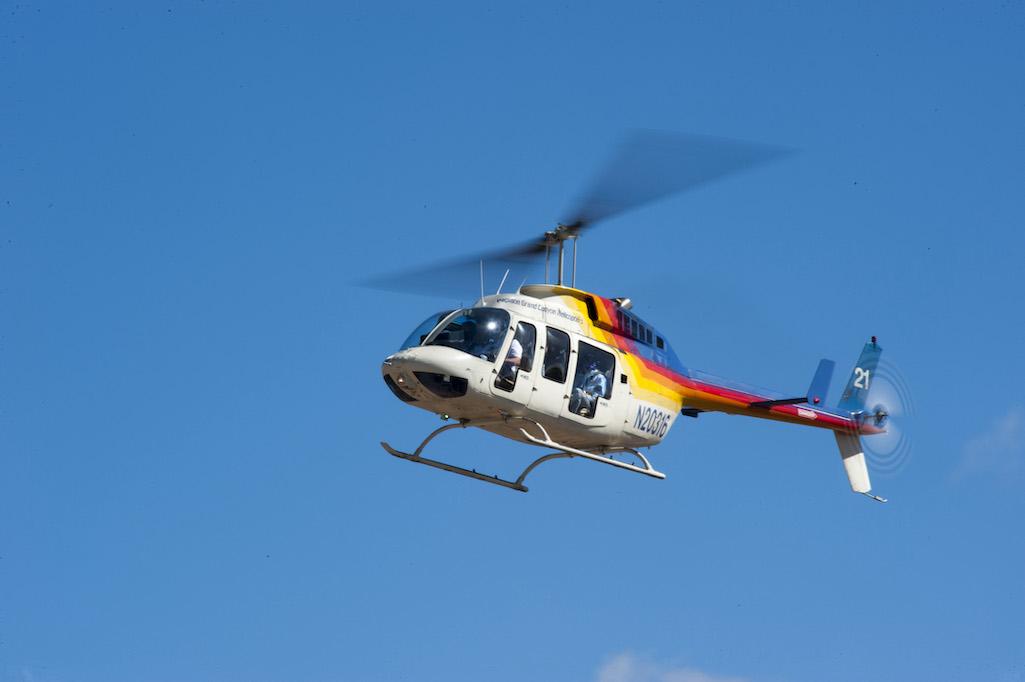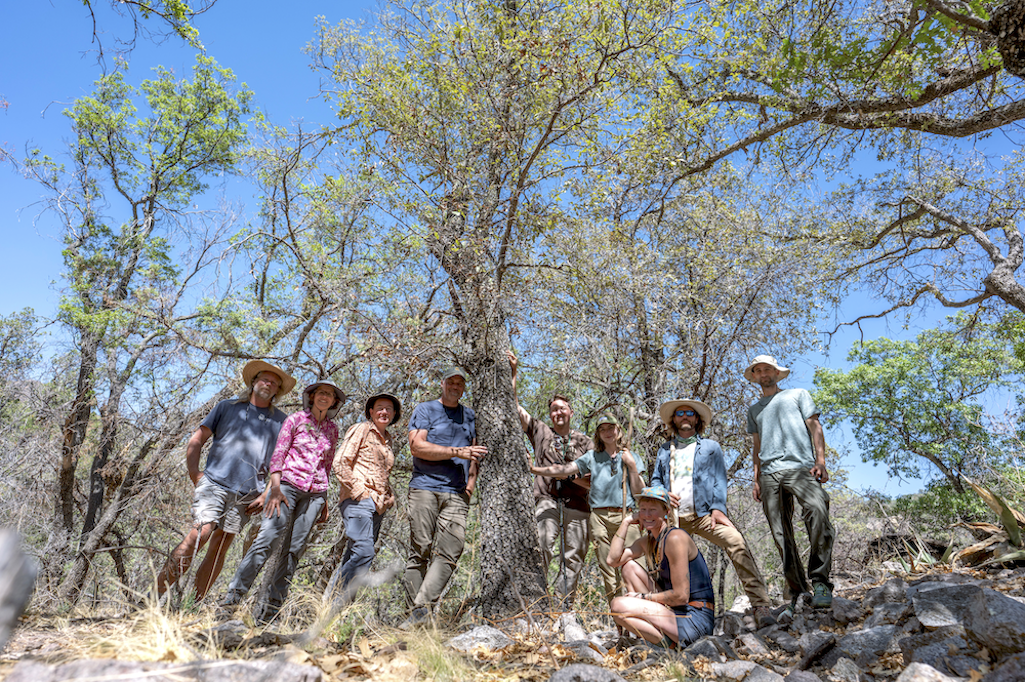When unprecedented flooding roars through a national park, shredding major roads that access the park, it rightfully could be pointed to as the top story in the National Park System. And while Yellowstone National Park was that park, not only the flooding but the lack of any human casualities and the relatively rapid recovery rank that story as arguably the top one in the National Park System in 2022. But that wasn't the only major story that came out of the parks this year.
The Mauna Loa volcano at Hawai'i Volcanoes National Park awoke after nearly 40 years of slumber, providing a colorful display of molten rock but doing no harm, climate change continued to deprive lakes Powell and Mead of badly needed water, battles with invasive species continued throughout the park system, and funding woes impacted both park staffing and staff resources.
Here's a look, in no particular order, at some of the top stories that flowed across the park system in 2021. Click on the headline to access the stories.

Yellowstone's Northeast Entrance Road after June flooding/NPS
Yellowstone Flooding
Yellowstone National Park closed all entrances Monday as flooding and rock and mud slides chewed away at park roads, forcing the evacuation of visitors in northern areas of the park due to "extremely hazardous conditions." With the potential for severe flooding in the southern half of the park, officials made the decision to shutter the entire park. Dramatic aerial footage captured by the park's helicopter manager demonstrated the damage being inflicted on the park. Read the story here.
Washed away roads, damaged water and sewer systems, and other unknown infrastructure and trail damage from what might have been a "once-in-a-thousand-year-storm" greatly complicates how soon Yellowstone National Park can reopen, and in what condition, and the odds are long that it will fully return to normal this year, Superintendent Cam Sholly told a national audience of journalists Tuesday during an hour-long Zoom call. Read the story here.
During a visit to Yellowstone National Park and Gardiner, Montana, on Sunday, June 19, National Park Service Director Chuck Sams with Yellowstone National Park Superintendent Cam Sholly announced $50 million to kick-start recovery efforts from record breaking floods. Read the story here.
No guidebook exists for reopening Yellowstone National Park after cataclysmic flooding, but things ran smoothly today as 10,000-12,000 returned to the park Wednesday for the first time since flood waters ravaged northern sections of the park. Read the story here.

Mauna Loa awakened after a nearly 40-year sleep/USGS
Mauna Loa's Awakening
When Mauna Loa came to life Sunday, it not only marked the first time in nearly 40 years that the world's largest active volcano erupted, but also the first time since 1984 that Hawai'i Volcanoes National Park's two volcanoes erupted simultaneously.
A slow motion eruption of sorts continued Wednesday on the Mauna Loa volcano in Hawai'i Volcanoes National Park, with a sluggish stream of lava heading towards a highway that bisects the Big Island. The eruption, which began late Sunday night, was confined to the Northeast Rift Zone of the world's largest active volcano.

The ongoing drought forced closure of the Dangling Rope Marina at Lake Powell/NPS
Glen Canyon National Recreation Area's Thirst
Not all is well with Glen Canyon National Recreation Area. A drought said to be the longest in 1,200 years has left Lake Powell at its lowest level since it began filling in 1963. Shrinking snowpack levels in the Colorado River drainage in recent years has failed to generate enough runoff into Lake Powell to more than offset the water running through the hydroelectric generating station in the Glen Canyon Dam and down into Grand Canyon National Park.

Maintenance woes are readily visible at Marsh-Billings-Rockefeller National Historical Park/Flint Shoop
Marsh-Billings-Rockefeller National Historical Park: Grappling With Maintenance
Conservation requires cooperation, collaboration, an ability to see future needs and wants, coupled with the openness to accept constructive criticism and embrace change. But in America’s national parks, without proper funding and staffing, a gap opens between vision and reality. Some evidence of that can be found in the rolling, leafy hills of Vermont within a national historical park tasked with tracking conservation and its evolution in America.

Tegus from South America are just one invasive species at Everglades National Park/USGS
Invasive Species And The Parks
A wide variety of invasive species, from plant invaders to disease-carrying mosquitoes, has infested parts of the National Park System. But there are stories of success. From slithering pythons and invasive fish to feral hogs and dog-sized lizards, the invaders have taxed the National Park Service's budget and human resources.

Questions have been raised over how much scrutiny the National Park Service gave to commercial park overflight tours/Patrick Cone
National Park Overflights
As the National Park Service began rolling out air tour management plans for a number of parks, the agency acknowledged that it never considered bans on the flights, and critics said the agency ignored the National Environmental Policy Act in crafting the plans.

Solving visitor crowding in parks is often easier said than done/NPS file
Dealing With Crowds
More and more parks are realizing crowds can be a problem and are moving to implement visitor use management plans. But sometimes those plans call for more visitors, not fewer.
At Cumberland Island National Seashore...
Cumberland Island National Seashore officials are open to more than doubling the allowable number of visitors to the park that straddles Georgia's largest barrier island, a decision that has raised concerns that the National Park Service is straying from the very reasons behind the seashore's establishment. Read the story here.
At Sequoia and Kings Canyon National Parks...
With record-breaking visitation over the past decade, staff at Kings Canyon and Sequoia national parks in California are embarking on a "Visitor Experience and Access" strategy and are seeking public feedback to help identify key issues and ways the National Park Service can improve visitor experiences.
At Yosemite National Park...
Yosemite National Park is one of the most popular parks in the United States, and it also can be one of the most crowded at times, at least in the iconic Yosemite Valley. Because of that congestion, the park has embarked on a path to develop a management plan for handling the crowds. Read the story here.
At Great Smoky Mountains National Park...
Crowds in particularly popular areas of the National Park System are challenging park managers to manage the crowds while preserving the natural resources. One solution that seems to be growing is to require reservations for access, something that's been adopted at Zion and Acadia national parks and tested at Great Smoky Mountains and Shenandoah national parks. Read the story here.
In a move to halt illegal roadside parking that greatly impacts the park, Great Smoky Mountains National Park crews will be installing barriers -- boulders, fencing, and wooden bollards -- to protect the road shoulders. Read the story here.

Devils Hole pupfish experienced a population boom of sorts in 2022/USGS
Those Amazing Pupfish
One of the most endangered fish species on the planet, one that calls a tiny water-filled canyon home, has undergone a population boom. National Park Service biologists recently surveyed the Devils Hole pupfish colony at Death Valley National Park, and counted 263 individuals, the greatest number recorded in 19 years. Read the story here.

Flooding does happen at Death Valley/NPS file
Flooding Death Valley
Yet another round of rainstorms has shut down most roads in Death Valley National Park, with the only access to the park on Wednesday from the east. Read the story here.
Storms fueled by the remnants of Hurricane Kay caused localized, heavy damage in Death Valley National Park on Saturday afternoon, September 10, 2022. California highway 190 (CA-190) is closed from CA-136 junction to Stovepipe Wells Village. Badwater Road is fully closed. Many other park roads are still closed from floods five weeks ago. Read the story here.
A three-hour rainstorm that dumped nearly 1.5 inches of rain on Death Valley National Park, causing widespread flooding that tore up roads, blew out water systems, and shut down the park, has been classified as a 1,000-year event by the National Weather Service. Read the story here.
Heavy rainstorms Friday that dumped nearly a year's worth of precipitation on Death Valley National Park sent floodwaters across the park, damaging dozens of cars, closing roads with rubble, and trapping roughly 1,000 visitors and staff inside the park. No injuries were reported. Read the story here.

Floodwaters at Mojave National Preserve this year caught some motorists in the wrong place/NPS file
Flooding Mojave Desert National Preserve
This summer's monsoonal deluges have so impacted roads through Mojave National Preserve that the National Park Service warns you not to use GPS technology to plan your trip through the preserve, as you could just end up stuck on a closed road, as the drive in the photo above did. Read the story.
Flash floods washed across Mojave National Preserve in California on Friday and again forced closure of the preserve's roads. One motorist who ignored the road closures saw their car trapped in the resulting quagmire. Read the story here.
All paved roads into Mojave National Preserve in California remain closed because of damage caused by flash floods on July 31 and August 1, the park announced Friday. Preserve roads sustained widespread water damage, including washouts and undercutting. Read the story here.
Unhappy NPS Staff
National Park Service employees are not convinced the agency is accomplishing its mission, according to the latest Best Places To Work In The Federal Government rankings. Read the story.

A surprising find in the backcountry of Big Bend National Park/US Botanic Garden
One Tough Tree
There stands in the dry and rugged canyon in the backcountry of Big Bend National Park in West Texas a worn and diseased oak tree from a species once thought to be extinct but which now offers hope that it can help revive the species last spotted more than a decade ago. Read the story.

 Support Essential Coverage of Essential Places
Support Essential Coverage of Essential Places



